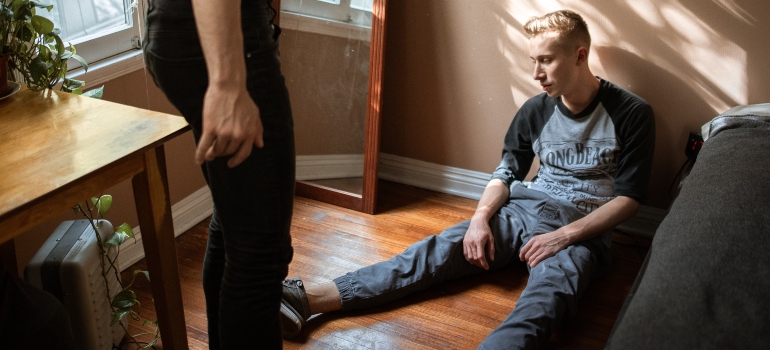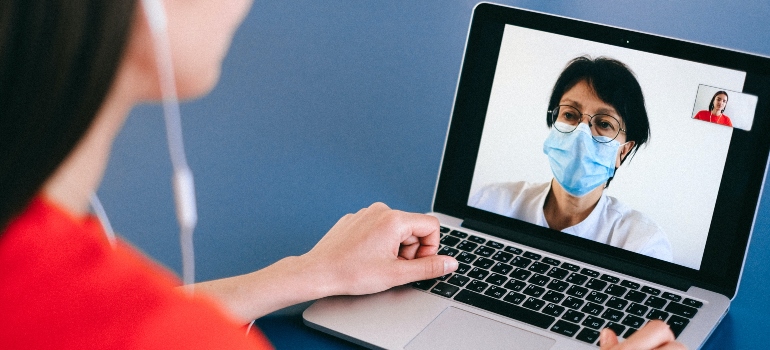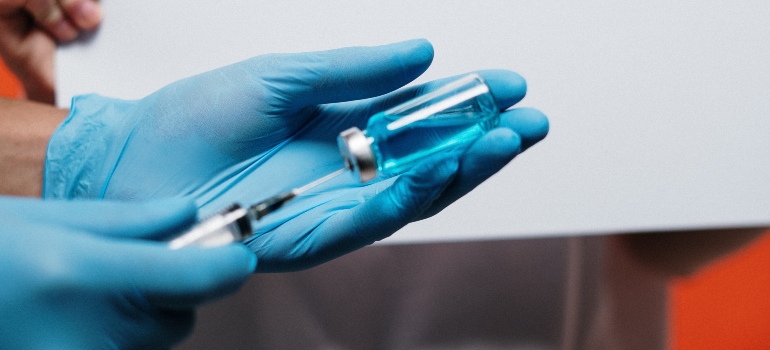Impact That COVID-19 Pandemic Had on Substance Abuse Among Adults
The COVID-19 pandemic took the world by storm. It affected millions of U.S. citizens, in more ways than one. One of the most important consequences of the pandemic is that it led to increased demand for mental health services. However, since mental health and substance abuse are closely connected, the impact that COVID-19 pandemic had on substance abuse among adults was profound. For example, almost every addiction treatment center in Pennsylvania experienced a large influx of new patients. There are many reasons why this is the case, all of which will be explained in this article.
Jump to Section
Understanding the impact that the COVID-19 pandemic had on substance abuse among adults
One of the most important changes that the COVID-19 pandemic brought was that most people suddenly found themselves staying at home. While everyone was affected in a way, three subgroups were particularly affected: Adolescents, adults without children, and parents of small children. Each subgroup experienced the pandemic and its stressors in a different way. As you might imagine, when people encounter additional stress, they need to find a way to deal with it. Unfortunately, many people turned to substance abuse.

According to CDC (Centers for Disease Control and Prevention) data, almost 15% of Americans started or increased their substance use during the pandemic. Consequently, overdose deaths spiked during the same period, and many people suddenly started seeking benzo addiction treatment. The worst increase was during the onset of the pandemic, when overdoses increased by almost 20%. Most people turned to alcohol as their substance of choice, but many others started using illicit drugs. Opioids, in particular, have become much more prevalent during the pandemic, as many states experienced large increases in opioid-related deaths.
To fully understand the impact that the COVID-19 pandemic had on substance abuse among adults, we first need to take a look at the reasons why people turned to substances in the first place.
How COVID-19 turned people to substance abuse
It is impossible to ascertain exactly what kind of impact COVID-19 had on substance abuse without looking at the “big picture”. COVID-19 had a huge impact on the U.S. population through the following factors:
- Fear of infection
- Social distancing
- Inability to maintain work
- No access to childcare
Of course, there were also countless individual factors that contributed to an increase in substance abuse. When more people suddenly turn to substances as their coping mechanism, word gets around. This, in turn, may prompt others to do the same. What starts as a simple way of passing the time suddenly turns people to inquire about Aetna rehab coverage, for example. To make matters worse, not everyone who wanted help was able to get it. At several points during the pandemic, treatment centers were so full that many people had to rely on telemedicine instead.
There is one thing that all these factors have in common: stress. Let’s take a look at how COVID-19 brought more stress into people’s lives.
Fear of infection
Fear of infection is something that almost everyone experienced during the pandemic. While many people were able to manage their fear in stride, many others had to find alternative ways to cope. Alcohol, opiates, and other substances presented an “easy way out” for many people that could not manage the fear that COVID-19 brought into their lives. As substance abuse inevitably leads to addiction, many adults have found themselves searching for alcohol rehab Allentown PA options, for example. As the pandemic progressed and people started hearing more and more “horror” stories, substance abuse spiked through the roof.

Social distancing
Due to how the COVID-19 virus was transmitted, the government had no choice but to enact social distancing protocols. While social distancing is an excellent way to stop the virus in its tracks, it also made people’s lives much harder. Many people rely on their social circle to stay “grounded”, get advice, stress relief, etc. When you suddenly can’t talk to your friends and family members in person, stress accumulates rather fast. As you might imagine, many people chose to either drown their sorrows with alcohol or lift their spirits by abusing other substances.
Social distancing has the most effect in highly urban environments. People in these environments usually have a much more social lifestyle. However, social distancing affects smaller communities, as well. It was expected that an alcohol rehab center in Edison NJ an increased number of patient requests during the pandemic. Social distancing also had a profound effect on people’s ability to hide their addiction. It is much easier to abuse a substance when you don’t get into contact with other people, after all.
Inability to maintain work
Perhaps the most important impact that COVID-19 pandemic had on substance abuse among adults can be observed through the new economic situation. Due to the newly imposed restrictions, many people have found that they are simply unable to maintain their work routines. This lead to an increased unemployment rate, at least initially. However, until people and companies adapted to the new situation, the damage was already done. Losing a job is one of the most stressful things in life, after all, and it can lead even the staunchest people to substance abuse. Of course, this is exactly what happened.
Once people start to abuse substances to cope with job loss, addiction soon follows. This led many people to start seeking treatment, wonder about Anthem rehab coverage, etc. The people that were most affected were those who were reliant on prescription painkillers. Without a job, they had to explore other, cheaper, options. Of course, the black market was more than willing to oblige. The result was that many more illicit drugs found their way to American homes.

No access to childcare
There is no doubt in anyone’s mind that life these days is quite hectic. Everyone has so much to do and so little time to do it. This is one of the main reasons why most Americans rely on childcare systems. After the pandemic hit, almost every childcare facility, including schools, simply stopped operating. Parents all across the country were suddenly tasked with performing all their duties and having to take care of their children 24/7. Needless to say, this brought an overwhelming amount of stress to the proverbial table. While many people simply adapted and found a way to function, many others needed a way to cope with the additional stress. Unfortunately, some of those ways included various addictive substances.
The most commonly abused substances include alcohol and depressants. Benzodiazepines, for example, have seen a high usage increase during the pandemic, as evidenced by the increasing rate of people seeking benzo addiction treatment once COVID-19 hit. However, alcohol still remains the most abused substance in families with children.
The U.S. government enacted numerous programs and initiatives to stop the impact that COVID-19 pandemic had on substance abuse among adults, but they were far from extremely effective. The primary problem was that people could not get the medical help that they need since the pandemic placed a huge strain on the country’s medical system. However, nothing lasts forever and the country adapted quickly.
The rise of telemedicine
Telemedicine has been around for quite some time now. However, only once COVID-19 hit did it become apparent that this medical branch needed more public attention. Due to the fact that many clinics and community-based organizations closed their doors in the wake of the pandemic, something needed to be done. Insurance companies and mental health providers started working together to enable viable telemedicine options for the general population.
Luckily, the telemedicine framework was already available. The one thing that stopped telemedicine from being viable in previous years was telehealth restrictions for behavioral health treatment and substance use disorder. Once the government realized that COVID-19 requires a different approach, many concessions were made. For example, it is now quite possible to get a full CBT treatment plan for substance abuse without stepping outside of your home. More importantly, however, medical insurance now fully includes telehealth plans.

Another thing that led to the rise of telemedicine is the fact that physicians were allowed to prescribe certain medications through telehealth. Before, a physician needed to perform an in-person exam to prescribe buprenorphine, for example. Furthermore, many methadone clinics started offering take-home methadone to their patients, allowing for easier maintenance. Basically, requirements were lowered across the board.
Easier access to mental health care
With the rise of telemedicine, many people were able to get the mental health care that was previously out of their reach. This lessens the impact that COVID-19 pandemic had on substance abuse among adults somewhat. However, many people do not have access to a stable internet connection. Even so, clinics across the country report an increase in people showing up for their psychotherapy appointments. This is mostly due to the fact that medical insurance now supports telehealth.
However, despite all these changes, it was still not enough. Even though adults have increased access to mental health care services, it still does not mean that they choose to utilize them. Mental health is, unfortunately, still a controversial topic among the adult population.
COVID-19 and substance abuse
Substance abuse and COVID-19 together are a very dangerous combination. According to NIM research, substance use disorders increase the risk of contracting severe COVID-19 illness. Furthermore, many people believe that their substance abuse precludes them from receiving a vaccine. This is extremely dangerous, as substance use disorders increase the risk of life-threatening complications from the pandemic. Furthermore, healthcare systems still struggle to provide vaccines to people struggling with substance abuse. There are certain programs, such as the COVID-19 Vaccine Navigator Initiative Online, but they are few and far between.

Another very serious concern is the fact that many substances increase the chance of a lethal outcome after contracting COVID-19. For example, stimulants such as amphetamine and cocaine have the effect of constricting the blood vessels, creating a variety of dangerous health conditions. Opioids, on the other hand, slow breathing and increase the risk of long-term damage to the lungs, heart, and brain. Once someone who already has heart or lung damage contracts COVID-19, a lethal outcome is much more likely.
What can we do?
The best thing that we can do to fight the increase in substance abuse in the aftermath of the COVID-19 pandemic is to spread awareness. The more people know exactly how dangerous substance abuse is, the better. Furthermore, everyone needs to get know what naloxone is.
Naloxone is a medicine that is capable of reversing an opioid overdose, meaning that it can save lives if administered at the right time. Some states are already introducing free naloxone programs, meaning that anyone who thinks they may need it can get their hands on it. The general idea is that as many people as possible carry naloxone with them at all times, allowing them the capability to save someone from a drug overdose. If you have any suspicions that anyone from your social circle might be abusing opioids, you might want to keep naloxone on hand. The most common form of naloxone, and the one that requires the least amount of training, is Narcan. This is a prepackaged nasal spray that can be administered into one nostril.
Aside from naloxone, you might also want to know who to contact if you encounter someone overdosing. You can call SAMHSA’s (Substance Abuse and Mental Health Services Administration) national helpline at 1-88-662-HELP (4357) or you can call or text 988 to reach SAMHSA’s Suicide and Crisis Lifeline.
If we all do our part, it is entirely possible to stop the substance abuse epidemic in its tracks. Due to the impact that COVID-19 pandemic had on substance abuse among adults, this is more important than ever.